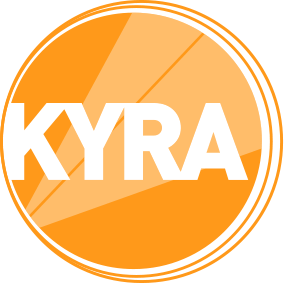
Collaborative working is now an established feature within the education system. The book I am reading at the moment is called ‘Collaboration in Public Policy and Practice’. It explores the role of individuals in collaborative working. The author, Paul Williams, describes these individuals as ‘boundary spanners’, people who work across the boundaries of organisations, institutions and sectors in order to enrol others in working towards a common goal.
As school leaders we work across multiple boundaries to enrol and harness the expertise of other professionals in helping our children flourish and our schools thrive. For Kyra, this is absolutely at the core of our vision. We aim to “harness our collectiveprofessionalism, expertise, and moral purpose, to ensure no one is left behind, and every school and individual in our partnership thrives – to the benefit of all children.” We are all boundary spanners!
Boundaries are exciting, intriguing and turbulent places to work. Boundaries are “like fault lines: they are the locus of volcanic activity. They allow movement, they release tension; they create new mountains; they shake existing structures” (E Wenger 1998 Communities of Practice)
However, boundaries are often the sites of conflict, miscommunication and misunderstanding, resulting in a lack of coordination and duplication – they are too often perceived as barriers and protected by organisational, sectoral and professional walls.
Alternatively, they can be the locus of transformation, collaboration, imagination, energy, innovation and creativity through the juxtapositioning of multiple professionals, schools, communities of practice and interests. Boundary encounters are healthy for people and organisations – they avoid atrophy, groupthink and inbreeding, and offer new opportunities for learning, knowledge acquisition and give us ‘windows on the world’. Because boundaries create new interplays of experience and competence, they are a powerful learning resource in their own right.
So how can we become even more effective when working across the boundary of our own school, with others in Kyra and beyond? Williams lists the strengths of a boundary spanner as “diplomacy, tact, dispassionate analysis, passionate sincerity and scrupulous honesty”. He notes that a boundary spanner appreciates and accommodates diversity and difference in perspectives and opinions and earns the trust of colleagues by being (a) competent (b) open (c) concerned and (d) reliable. Williams says that a good trusting relationship is where the “boundaries between organisations almost fall away; these artificial boundaries become less important”, and the focus becomes about how we work and learn together.
When it comes to accountability, Williams notes that “boundary spanners recognise the first call on their accountability was to their employing organisation, and that they were not free agents”. However, in discharging this primary accountability, boundary spanners “recognise the value and legitimacy of other sources of accountability that stemmed from engaging collaboratively with other agencies and actors”. This also resonates with the Kyra DNA.
I would like to leave you with two questions to reflect on:
As school leaders we work across multiple boundaries to enrol and harness the expertise of other professionals in helping our children flourish and our schools thrive. For Kyra, this is absolutely at the core of our vision. We aim to “harness our collectiveprofessionalism, expertise, and moral purpose, to ensure no one is left behind, and every school and individual in our partnership thrives – to the benefit of all children.” We are all boundary spanners!
Boundaries are exciting, intriguing and turbulent places to work. Boundaries are “like fault lines: they are the locus of volcanic activity. They allow movement, they release tension; they create new mountains; they shake existing structures” (E Wenger 1998 Communities of Practice)
However, boundaries are often the sites of conflict, miscommunication and misunderstanding, resulting in a lack of coordination and duplication – they are too often perceived as barriers and protected by organisational, sectoral and professional walls.
Alternatively, they can be the locus of transformation, collaboration, imagination, energy, innovation and creativity through the juxtapositioning of multiple professionals, schools, communities of practice and interests. Boundary encounters are healthy for people and organisations – they avoid atrophy, groupthink and inbreeding, and offer new opportunities for learning, knowledge acquisition and give us ‘windows on the world’. Because boundaries create new interplays of experience and competence, they are a powerful learning resource in their own right.
So how can we become even more effective when working across the boundary of our own school, with others in Kyra and beyond? Williams lists the strengths of a boundary spanner as “diplomacy, tact, dispassionate analysis, passionate sincerity and scrupulous honesty”. He notes that a boundary spanner appreciates and accommodates diversity and difference in perspectives and opinions and earns the trust of colleagues by being (a) competent (b) open (c) concerned and (d) reliable. Williams says that a good trusting relationship is where the “boundaries between organisations almost fall away; these artificial boundaries become less important”, and the focus becomes about how we work and learn together.
When it comes to accountability, Williams notes that “boundary spanners recognise the first call on their accountability was to their employing organisation, and that they were not free agents”. However, in discharging this primary accountability, boundary spanners “recognise the value and legitimacy of other sources of accountability that stemmed from engaging collaboratively with other agencies and actors”. This also resonates with the Kyra DNA.
I would like to leave you with two questions to reflect on:
- Firstly, to what extent do you enable your teachers to benefit from ‘boundary encounters’, working with and learning from others in the alliance?
- And secondly, how effective is your peer review group in building lateral trust-based accountability?
Marie-Claire Bretherton
Paul Williams
Publisher: Policy Press (18 Jan. 2012)
